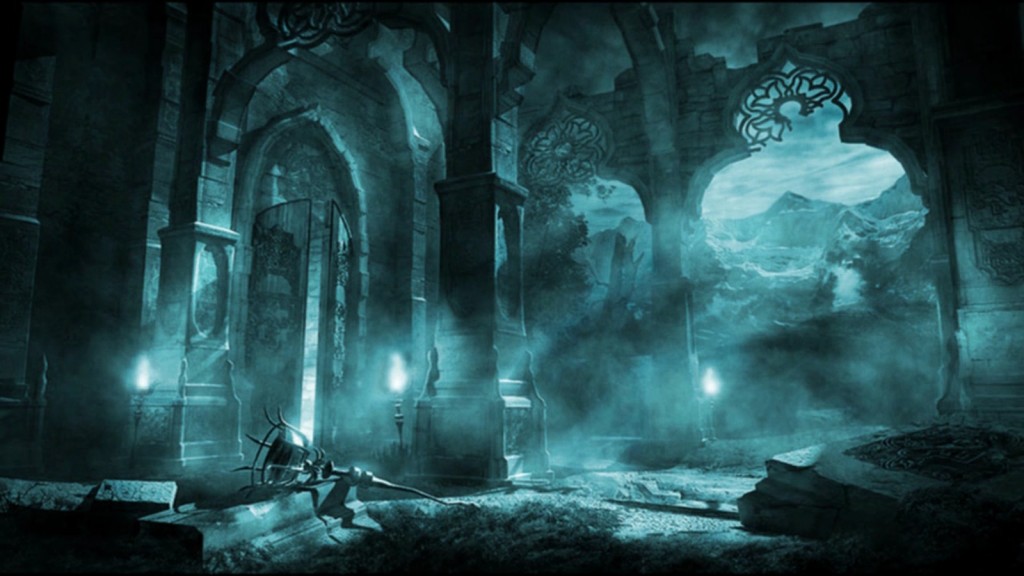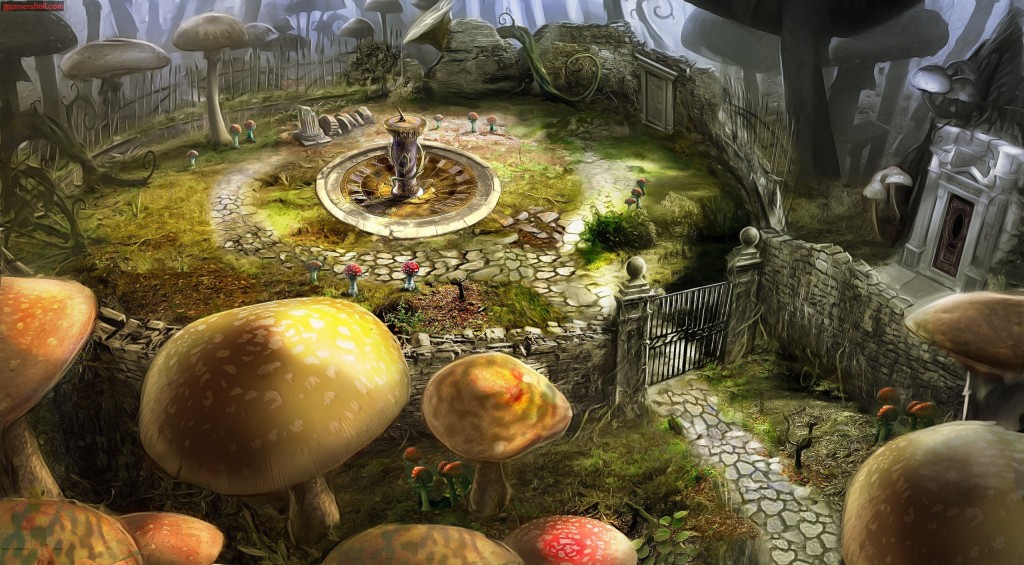The Empty Vestiges of Spectacle
I often find myself coming away from the onslaught of trailers of E3 feeling like a kid who has gorged herself on nothing but candy for dinner. Lots of furious flashings, no real substance. A familiar refrain of “no game play” echoed across Schmamerdom these first initial days, which should come as no surprise: the coruscations that compel us to purchase the game are often more interesting than what we find once played. This is not a new complaint, but it is one I think more of us are apt to issue. Somewhere around the time Killzone 2’s trailer was launched we collectively figured out that how well a trailer is put together has no bearing on the quality of game we should expect.
Yet trailers are by far the most prominent way developers connect with their intended audience, and so we get increasingly frantic action interspersed with pretty fonts on black screens and tied together with the ubiquitous esoteric European voice over. And most of it, I would argue, washes out of our memory within a few hours. Some of the most exciting announcements for many of us, Kingdom Hearts 3 and Final Fantasy XV, were titillating just by being announced; the name recognition and what we connote with it are what made our pulse quicken, not anything that was actually shown. Same goes with Halo, Call of Duty and Titanfall, just to name a few.
Not to say that trailers are inherently worthless— like candy they can “taste” fucking fantastic, and they serve their purpose, but also like candy it shouldn’t be the main focus of a healthy diet. I think the problem comes from misidentifying what spectacle is meant to accomplish. We’ve grown up seeing dazzling displays of pyrotechnics, special effects and beautifully choreographed happenings bring audiences to the edge of their seats time and again, and so assume that the spectacle itself must be responsible, without considering the myriad of non-flashy supporting things that are hard at work laying the foundation for that spectacle to be so effectively explosive. And so more and more effort has been poured into making those spectacles more spectacular, pushing the supporting structures more and more to the back, and then we ask ourselves, when everything is all said and done, why the bigger bangs and sensational fripperies ring so hollow.
It’s like misidentifying the emotional release that comes from the kiss at the end of a romance to be solely due to the kiss itself, not the romantic tension slowly built up during the course of the story. So obviously the best thing to do for the next work is to fill it with as many kisses as possible.
The audience has fooled themselves, too, into wanting just what tastes good and not what will ultimately satisfy. We’ve become children with wallets: We have leverage over what we consume, developers and producers can’t be the parents that make us eat our vegetables without risking huge financial consequences.
So we’re presented with empty ruins of what was once a solid, intricate structural marvel of storytelling and cinematics and told this is what we’ve been asking for. So this is what we’re marketed; trailers carefully constructed to be as loud and frenetic as possible, subtly mostly lost.
But in the gaming industry, what— short of releasing the full game— can they do, besides an ostentatious trailer, to grab our attention? Most developers set up booths with short game play demos to give those that can attend the conference, at least, some substance to sink their teeth into. But surely there are other ways of drawing attention to a game that delivers something less transient than what trailers can provide? Why not draw attention to the other (hopefully) carefully crafted artistic aspects of your game?
 Does your game have a strong visual style? Emphasize it! Take some concept art, polish it and blow them up on large canvases, plaster them around your booth and make an art gallery of sorts. If you’re really ambitious, get some small monitors out beside each portrait with how that concept art is actually rendered in the game. Place them along the line people will form to play your game demos, let them peruse how bewitching and alluring your art direction is, have them savor how much effort you put into this aspect of the game, something they might not fully get to appreciate with 15 minutes of a demo. What else are they going to do while standing in line?
Does your game have a strong visual style? Emphasize it! Take some concept art, polish it and blow them up on large canvases, plaster them around your booth and make an art gallery of sorts. If you’re really ambitious, get some small monitors out beside each portrait with how that concept art is actually rendered in the game. Place them along the line people will form to play your game demos, let them peruse how bewitching and alluring your art direction is, have them savor how much effort you put into this aspect of the game, something they might not fully get to appreciate with 15 minutes of a demo. What else are they going to do while standing in line?
Does you game have some kick ass music to boast? Rent an orchestra, have your composer compile an orchestral suite out of his soundtrack (like what Tchaikovsky did with his ballets) and put on a concert a la Video Games Live, but with something completely new. It would attract attention due to its sheer novelty, and provides the audience with something substantial to remember long after they’ve forgotten the deluge of trailers. You can stream it to the rest of the world too, many of us would eagerly eat it up.
If we’re going to argue that games can and should be taken seriously as an artistic medium, why not accentuate the actual artistic qualities of them? There are so many other ways to engage gamers and make them want your game that don’t involve just putting out a pretty trailer and a short demo, which have become so routine as to almost render them meaningless, and that provides something more substantial for us to salivate over while we wait for and anticipate its release; tantalizing ideas I haven’t even begun to think of yet. I’d really like to finish E3 one of these years filling fulfilled as well as excited.
But that isn’t going to happen until we’ve figured out how to reconstruct the vestiges of solid entertainment we’ve so carefully disassembled over the years, and put the spectacular in its proper place: as the decorative stained glass windows, not the foundations.


